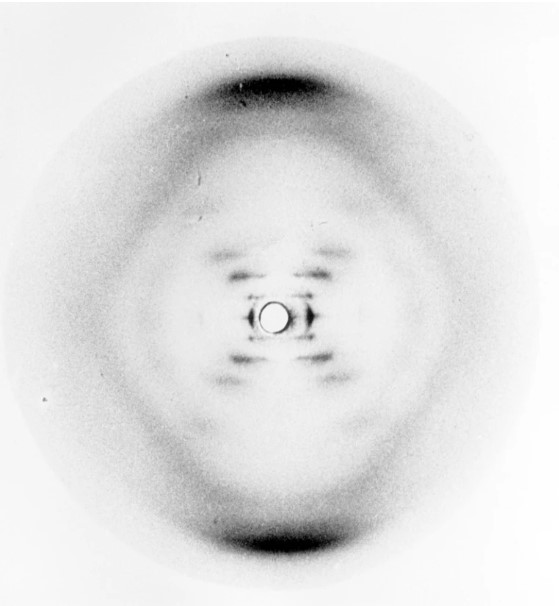Denying her agency never made any sense. She was recruited because of her brilliance, but she had a personality and an ego like many great scientists, and her dislike of Wilkins may have clouded her judgment. She never saw what Watson and Wilkins believed and what Watson and Crick did find - almost a year after she dismissed it.
Wilkins wasn't thrilled King's got beat and wrote to Crick: "To think that Rosie had all the 3D data for 9 months & wouldn't fit a helix to it and there was I taking her word for it that the data was anti-helical. Christ."(2)
It was worse than that. She was so opposed to the idea that she mocked up a funeral notice for the crystalline DNA helix. She saw any questions about a helix as a distraction. Most chemists would have agreed with her, note Matthew Cobb and Nathaniel Comfort in Nature, but her focus on her own ideas was why Photograph 51 sat for all those months. Until James Watson visited, and she got in a fight with him too, so Wilkins took him away and showed him other things they had been working on. Including that image.

Photograph 51.Credit: King's College London Archives
We can build Franklin up without tearing her peers down. Science is not a zero-sum game. Yes, they got their names on a Nobel prize but she had passed away by then. Would she have gotten included anyway? Hard to say. King's College scholars didn't like getting beat, Wilkins refused co-authorship with Watson and Crick in Nature, and Franklin likely would have done the same. That she refused to see what Wilkins hoped he would find - he felt like he harmed himself giving her the superior sample - may have been her undoing when it came time to debate who a third recipient should be.
NOTES:
(1) Raymond Gosling, who did the bulk of the work as her graduate student, gets little mention at all.
(2) Discovered, strangely, in the papers of Sydney Brenner, who had shared an office with Crick at the Medical Research Council Laboratory of Molecular Biology. When Brenner moved to Cold Spring Harbor, dozens of boxes of papers went with him, and the letter was discovered a few years ago.



Comments